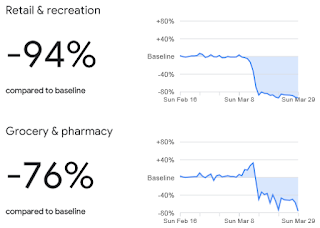A popular meme says that Dr. Joseph-Ignace Guillotine invented the execution device for the French king, and then the king tested it on the doctor himself, who did not need payment because the machine was effective.
However, this story is not true. Dr. Guillotine did not invent the machine.
He was a member of the Estates-General Assembly, and as a humanist he proposed a more egalitarian form of execution -- before that, the noblemen were executed by sword and others were hanged, both of which methods the French executioners often botched, apparently not having enough practise with the sword and not having a well-researched Official Table of Drops. But in fact Dr. Guillotine was opposed to the death penalty.
The actual "guillotine" machine was designed by a man called Tobias Schmidt. Doesn't that sound very German? Always causing trouble for the French.
After the revolution, Dr. Guillotine resumed his medical profession, studied the works of Edward Jenner and became the President of the Committee for Vaccination in Paris.
15.4.2020
4.4.2020
How Finland is different: the walk in the park edition
Google published a few days ago Community Mobility Reports which decision-makers can use to assess the impact of lock-down impacts and the imposed social distancing of people is working.
Some of results offer an insight to how nations are different.
In most countries, the actions taken have significantly reduced shopping, mass transit use and going to restaurants and cafes.
For instance, UK:
Spain:
Italy:
This is a huge change in how people live their daily lives. It cannot last indefinitely, but it is felt necessary to contain the epidemic.
But Sweden is quite different - much smaller decrease in restaurant-going, shopping, and going to ski resorts:
Finland has reduced these activities more than the Western neighbour:
But the actual differences are in outdoor life. UK, and especially Spain and Italy, have seen drastic reduction in access to places like national parks, public beaches, marinas, dog parks:
But Sweden has again it quite different:
However, Sweden is not as different as Finland, where the closure of schools, workplaces and such has lead to even larger increase in outdoor life in open areas:
Finland is not completely unique, though. There are some states in the U.S. that are similar, e.g. West Virginia. But the most extreme I found is the state of Montana, which has seen reduction in retail and some in grocery, but access to parks has more than doubled.
It's a shame that Google doesn't publish the data for Russia.
It is likely that Finland's smaller reduction of mobility in shopping and recreation compared to Italy or Spain is because our baseline is significantly lower: population density is lower, and people here have always kept a longer physical distance to other people. We don't go as often to restaurants and cafes, and shops are less crowded.
But the park figure is interesting. It clearly shows that we feel that there is space there, and it is safe to go out in the nature.
Some of results offer an insight to how nations are different.
In most countries, the actions taken have significantly reduced shopping, mass transit use and going to restaurants and cafes.
For instance, UK:
Spain:
Italy:
But Sweden is quite different - much smaller decrease in restaurant-going, shopping, and going to ski resorts:
Finland has reduced these activities more than the Western neighbour:
But the actual differences are in outdoor life. UK, and especially Spain and Italy, have seen drastic reduction in access to places like national parks, public beaches, marinas, dog parks:
But Sweden has again it quite different:
Finland is not completely unique, though. There are some states in the U.S. that are similar, e.g. West Virginia. But the most extreme I found is the state of Montana, which has seen reduction in retail and some in grocery, but access to parks has more than doubled.
It is likely that Finland's smaller reduction of mobility in shopping and recreation compared to Italy or Spain is because our baseline is significantly lower: population density is lower, and people here have always kept a longer physical distance to other people. We don't go as often to restaurants and cafes, and shops are less crowded.
But the park figure is interesting. It clearly shows that we feel that there is space there, and it is safe to go out in the nature.
Tilaa:
Blogitekstit (Atom)










